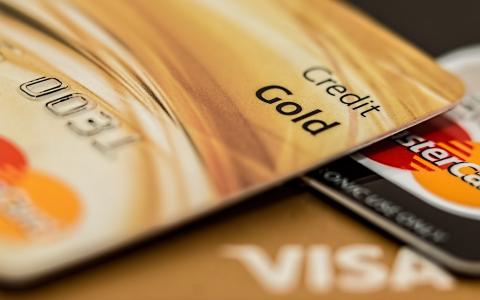
(Fortune) - Americans are dealing with inflation by turning to credit.
They’re not just racking up higher balances on their credit cards as sky-high inflation and rising interest rates hit household wallets, though.
A study released Tuesday by the Federal Reserve Bank of New York’s Center for Microeconomic Data shows a 13% cumulative year-over-year increase in credit card balances. That's the largest jump in 20 years, since 2002.
Credit card debt stands at $890 billion as of the end of the second quarter, according to the quarterly report on household debt and credit. While credit card balances typically rise during the second quarter, the $46 billion increase makes the second quarter one of the highest jumps on record since 1999. The last time total credit card balances were this high was the first quarter of 2020.
"Americans are borrowing more, but a big part of the increased borrowing is attributable to higher prices," New York Fed researchers wrote Tuesday. Not only did balances increase, researchers note, but the number of new credit cards was up too.
View this interactive chart on Fortune.com
Mortgages, auto loans, retail cards, and other consumer loans also rose at a fairly rapid clip. In total, non-housing debt grew by $103 billion during the second quarter, the largest increase recorded by the New York Fed since 2016.
Overall, Americans’ total household debt increased by 2% to $16.15 trillion during the second quarter, according to the New York Fed. That puts balances about $2 trillion higher than they were at the end of 2019, prior to the onset of the pandemic.
“The second quarter of 2022 showed robust increases in mortgage, auto loan, and credit card balances, driven in part by rising prices,” Joelle Scally, administrator of the center for microeconomic data at the New York Fed, said in a statement Tuesday. “While household balance sheets overall appear to be in a strong position, we are seeing rising delinquencies among subprime and low-income borrowers with rates approaching pre-pandemic levels.”
It’s not surprising that Americans are piling on the debt in the wake of inflation—which hit 9.1% in June—or the Federal Reserve’s interest rate hikes. Last week, the Fed upped benchmark interest rate by another 0.75% in an effort to curb the current high inflation, but that also means those with debt will likely pay more.
Those economic headwinds are hitting younger and lower-income Americans harder. Gen Z’s credit card balances (those under the age of 25) spiked by 30% during the second quarter, according to VantageScore data reported by Reuters. Those with low credit also saw big jumps in credit usage, with balances up 25% for those with credit scores below 660 (considered a “fair” credit score and below average).
Yet so far, not many Americans are defaulting on that rising debt. Delinquencies rose only modestly for household debt during the second quarter and remain historically low, according to the New York Fed.
That’s not surprising given Americans’ fairly robust financial health. Yes, many are combating historic inflation and rising interest rates, but consumers typically don't default on credit because things get more expensive, says Richard Ramsden, the leader of the financials group in Goldman Sachs’ global investment research.
Usually, higher prices mean that consumers start making changes to what they buy, migrating away from the “nice to have” items to the “must have” basics, Ramsden says. “Usually consumers default when they lose their job and they cannot get reemployed. And at the moment, obviously, we've got very, very tight labor markets,” Ramsden says.
“For us to see broader-base consumer defaults, you'd need to see unemployment pick up and you need to see the labor market weaken considerably and that's, obviously, not something that we're anticipating at least to happen over the balance of this year,” Ramsden says.
This story was originally featured on Fortune.com
By Megan Leonhardt



